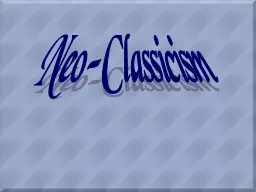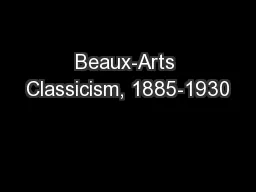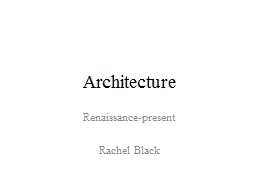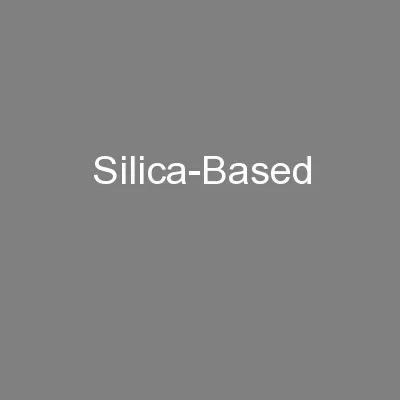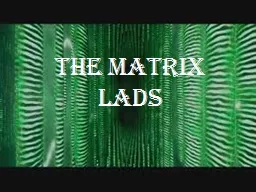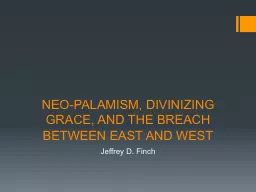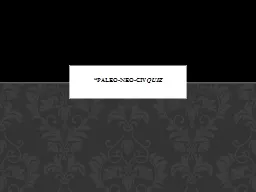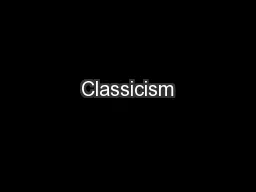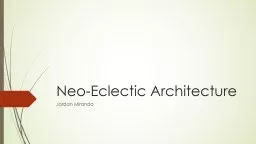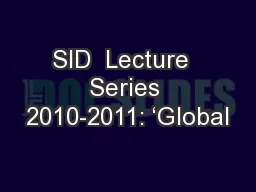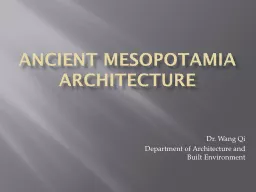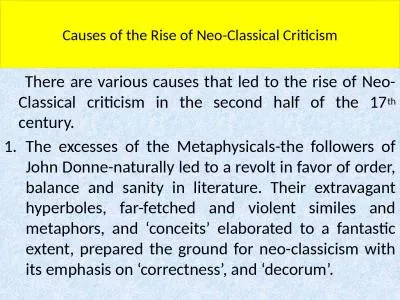PPT-Neo-Classicism Characteristics of Neo-Classicism
Author : iainnoli | Published Date : 2020-06-19
Art produced in Europe and North America from the mid18c to the early 19c Return to the perceived purity of the arts of Rome Model the ideal of the ancient Greek
Presentation Embed Code
Download Presentation
Download Presentation The PPT/PDF document "Neo-Classicism Characteristics of Neo-Cl..." is the property of its rightful owner. Permission is granted to download and print the materials on this website for personal, non-commercial use only, and to display it on your personal computer provided you do not modify the materials and that you retain all copyright notices contained in the materials. By downloading content from our website, you accept the terms of this agreement.
Neo-Classicism Characteristics of Neo-Classicism: Transcript
Download Rules Of Document
"Neo-Classicism Characteristics of Neo-Classicism"The content belongs to its owner. You may download and print it for personal use, without modification, and keep all copyright notices. By downloading, you agree to these terms.
Related Documents

